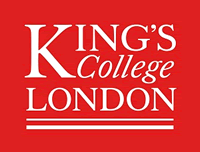Prof Mengxing Tang, Dr K Christensen, Dr Y Luan
Applications accepted all year round
Funded PhD Project (UK Students Only)
About the Project
This project is part of the joint King's College London - Imperial College London EPSRC Centre for Doctoral Training (CDT) in Smart Medical Imaging: https://www.findaphd.com/phds/program/epsrc-centre-for-doctoral-training-cdt-in-smart-medical-imaging/?i132p2301
This is an interdisciplinary project oriented at clinical application with a clear industrial interest. The PhD candidate will be working closely with lead scientists at GE Healthcare Pharmaceutical Diagnostics UK. The candidate will also have opportunities to travel to international conferences. Through this project the candidate will be able to develop knowledge and skills in medical imaging, image processing/reconstruction and pharmaceutical development.
According to National statistics in the UK, liver diseases have been ranked as the fifth most common cause of death. With the increasing incidences of obesity and consumption of alcohol among the western population, liver disease rates are steadily increasing over the years. Key clinical challenges of liver disease include the accurate diagnosis and staging of the disease, and the monitoring of therapy.
A recent advance in ultrasound imaging is the advent of microbubble contrast agents, micrometer size bubbles (with the size range of 3-10 µm diameters) that have shown excellent safety record for human use. Such agents typically consist of an inert gas core encapsulated by a stabilizing shell (protein, lipid or polymer). They are blood pool agents which scatter ultrasound signals very efficiently, thus can be used for imaging both macro- and micro- blood circulation [1]. SonazoidTM microspheres (GE Healthcare) have been shown to have very stable physicochemical characteristics and have been approved in several countries/regions for clinical liver imaging and diagnosis [2].
SonazoidTM has a unique imaging feature comparing to other commercially available UCA – it can be taken up by the Kupffer cells, a special type of white blood cells as part of the body defence system, and hence has an extended late phase (termed “Kupffer phase”) when targeted imaging of such cells can be made. The very stable Kupffer phase imaging is suitable for repeated scanning from 10 to 60 min after contrast injection [3]. Different patterns of vascular phase (0-2 min after injection), late phase (2-10 min) and Kupffer phase (>10 min) contrast enhancement can be used to distinguish between different types of focal liver lesions effectively. Figure 1 shows an example of characterisation of liver metastasis using contrast-enhanced ultrasound imaging with SonazoidTM [4].
Aim of the PhD Project
The objective of this project is to use ultrasound contrast agent (UCA) SonazoidTM, together with advanced ultrasound transmit and receive sequences and signal processing, to extract liver tissue structure, functional and cellular information. The acoustic properties of the agents will be studied and adaptive imaging algorithms to optimise the imaging strategy using SonazoidTM will be developed. We envision a two-stage imaging algorithm: Firstly, during the vascular phase when most agents are freely flowing in the vascular space, high-speed imaging techniques could be applied, and images could be reconstructed and processed on a pixel-by-pixel level to visualize the blood perfusion in large and small vessels (e.g., angiogenesis) in liver tumours [5-6]. Secondly, during the late phase and Kupffer phase when most freely flowing agents are gone, image processing and modelling techniques can be developed and applied to extract cellular information within the liver. These algorithms can be developed using a tissue-mimicking phantom on a programmable imaging platform; the methodology can also be tested and potentially implemented on a GE LOGIQ E9 ultrasound system.
In addition, the individual is also highly encouraged to devise and explore other ideas, with the ultimate goal of improving the capability and efficacy of liver lesion imaging and diagnosis using SonazoidTM.
This is an interdisciplinary project oriented at clinical application with a clear industrial interest. You will be working closely with industrial partners at GE Healthcare Imaging R&D. This will be a great opportunity for the individual to develop knowledge and skills in medical physics, image processing/reconstruction, laboratory-based phantom development and measurements and medical devices.
Funding Notes
This is a project for a Home student for October 2019 start co-sponsored by GE.
Deadline: This project is being interviewed for and filled on a rolling basis. Please submit your application at your earliest opportunity.
References
[1] Cosgrove and Lassau, Imaging of perfusion using ultrasound, Eur J Nucl Med Mol Imaging 27, 2010
[2] Sontum, Physicochemical characteristics of SonazoidTM, a new contrast agent for ultrasound imaging. Ultrasound in Med. & Biol., 2008
[3] Kudo et al., Contrast enhanced ultrasonography for diagnosis of hepatic malignancies: comparison with contrast-enhanced CT. Oncology 75, 2008
[4] Kudo et al., Sonazoid-enhanced ultrasound in the diagnosis and treatment of hepatic tumours, J Med Ultrasound, 2008
[5] Stanziola et al., Temporal and spatial processing of high frame-rate contrast enhanced ultrasound data, Conference paper 21st European symposium on ultrasound contrast imaging, Rotterdam, 2016
[6] Errico et al., Ultrafast ultrasound localization microscopy for deep super-resolution vascular imaging, Vol 527, Nature, 2015

 Continue with Facebook
Continue with Facebook

